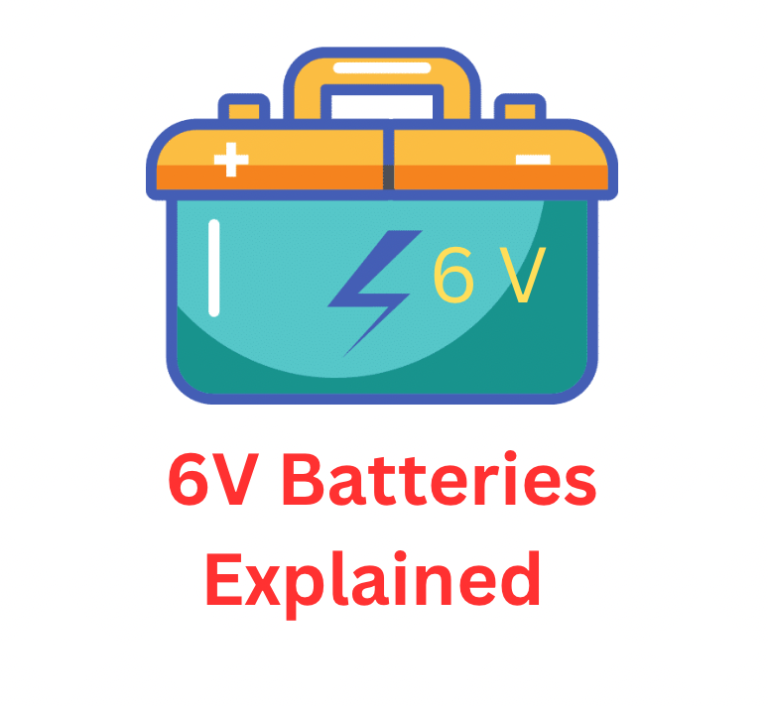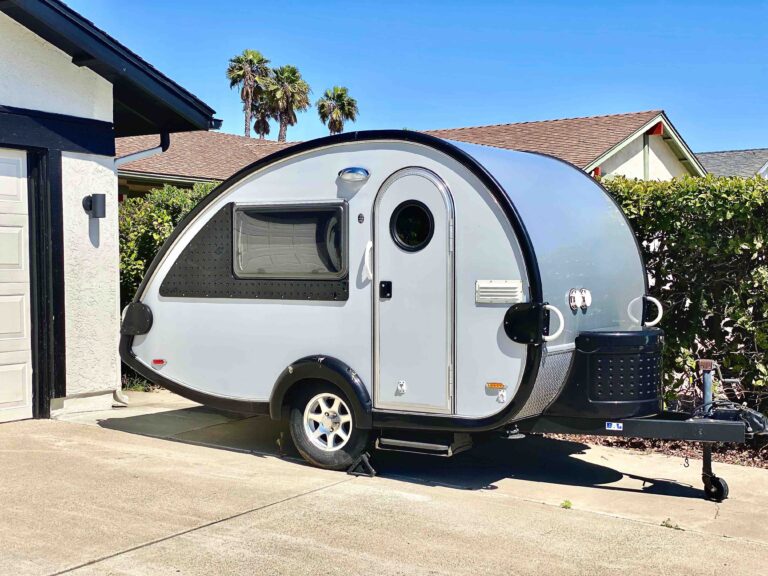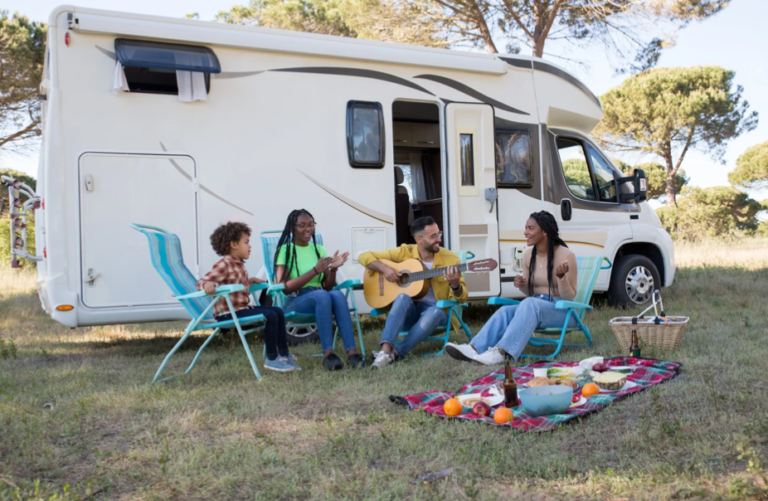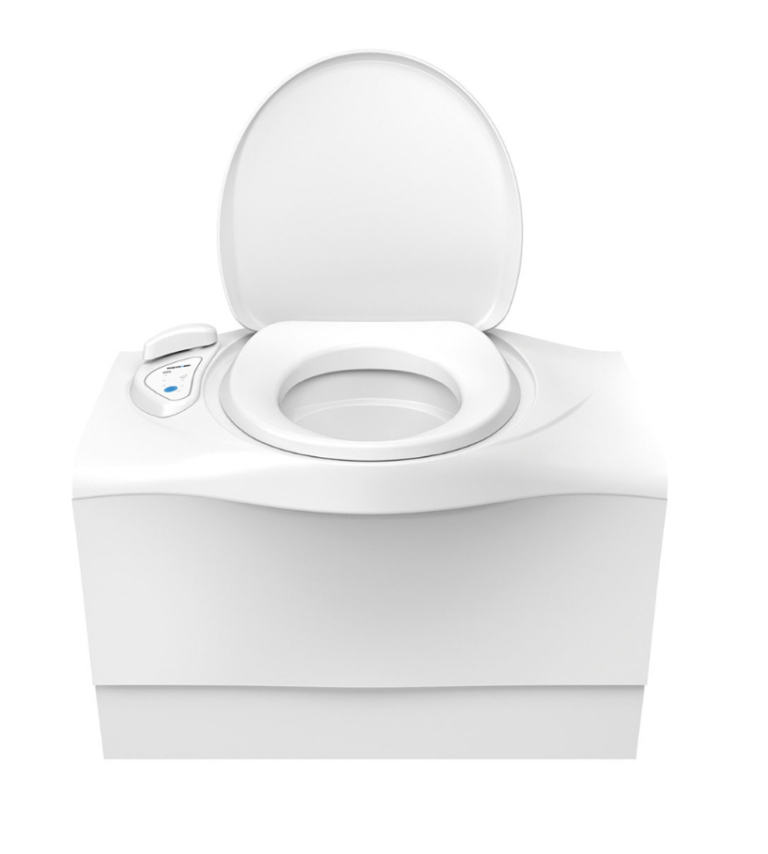RV Batteries: Beginners Guide to Choosing and Installing 2024

Hi I wrote this Beginners Guide to Choosing and Installing RV Batteries not just for you the reader but also for me to understand in more depth as I’m not electrically minded at all .
If you’re a motorhome/campervan/RV enthusiast, you know how important it is to have reliable power when you’re on the road. That’s where a motorhome leisure battery comes in.
An RV leisure battery is essentially a deep-cycle battery that provides power to your motorhome when you’re not connected to an external power source. It’s different from a regular car battery because it’s designed to discharge and recharge more efficiently and effectively.
The Benefits of Using a Leisure Battery in Your Motorhome/RV
There are several benefits of using a RV battery in your motorhome.
First and foremost, it allows you to have access to electricity even when you’re off the grid.
This means that you can park up in remote locations or campsites without worrying about whether or not there will be an electrical hookup available. A leisure battery also enables you to run your appliances and devices without having to start up your engine.
This not only saves fuel but also reduces noise pollution, making for a more peaceful camping experience. Furthermore, with the right kind of batteries, such as lithium-ion ones, there are minimal maintenance requirements compared to other types such as lead-acid batteries.
How Does It Work?
RV batteries operate by converting chemical energy into electrical energy through an electrochemical reaction.
They consist of multiple lead-acid cells connected in series; each cell contains lead plates submerged in an electrolyte solution made up of sulphuric acid and water.
As current passes through the cells during discharge (when the appliances connected consume power), the chemical reaction between the electrolyte solution and the lead plates produces electrons that move towards one end of each cell; at this stage they provide electricity that powers your devices/appliances.
When charging occurs – which happens when the vehicle engine is turned on or electricity from a hook-up point is connected to the motorhome/RV- the reaction is reversed, and the electrical energy stored on the lead plates now acts as a battery. The process can be repeated many times with minimal degradation of power storage capacity up until end of life.
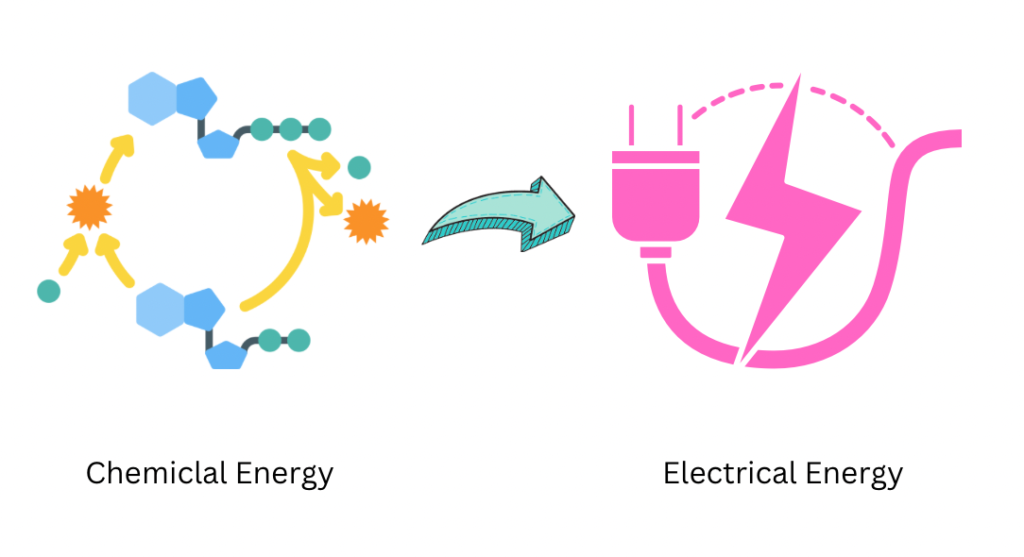
A leisure battery is an essential component for any motorhome/RV enthusiast out there seeking adventure on the road.
It provides freedom and flexibility to explore off-grid remote locations and helps to make your camping experience more enjoyable with less noise pollution and fuel costs.
Moreover, by understanding how it works, you can get more value from these batteries by maximising their lifespan through proper usage and maintenance practices – we’ll cover these in later sections.
Tip:
At the time of writing this blog im having issues with my batteries both Vehicle battery as well as Leisure battery , having spoken to my dealer I have realised in the last 2 weeks I have not fully charged the batteries via a hook up IE: at a campsite , if I do this regularly I will sustain high battery levels on my monitor and they will last longer .

Types of Motorhome/RV Batteries
If you are in the market for a new motorhome/RV leisure battery, you will quickly discover that there are various types available. Knowing the differences between them can help you make an informed decision on which one is right for your needs.
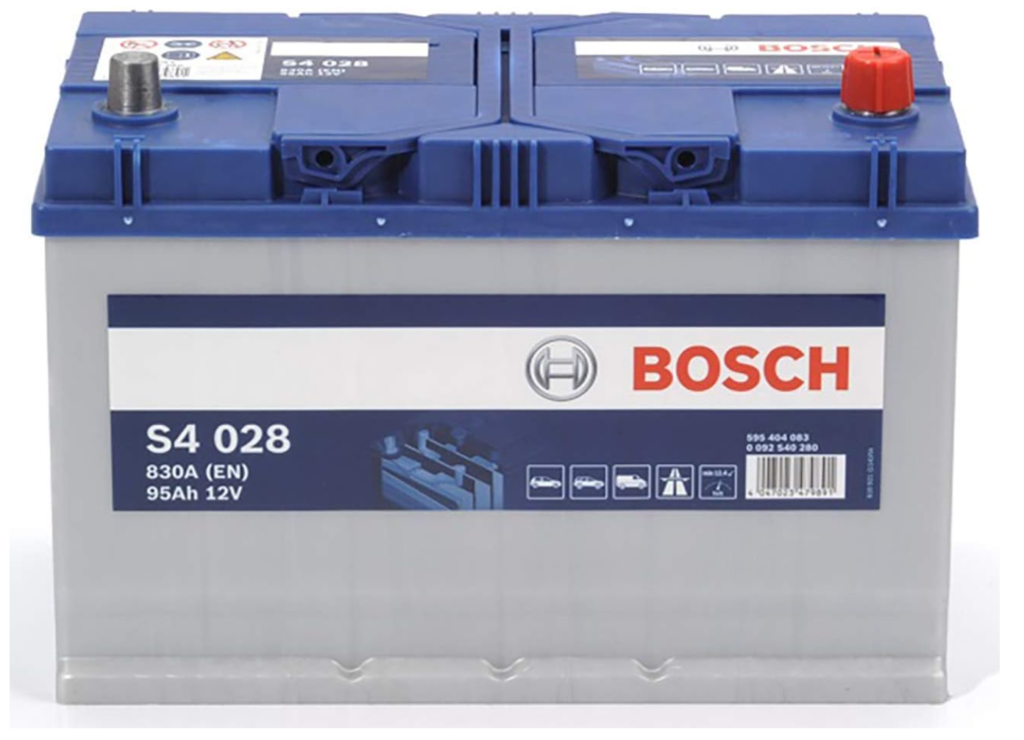
Lead-Acid Batteries
Lead-acid batteries have been around for many years and remain a popular choice among motorhome owners. They are known for providing reliable power at an affordable price point.
These batteries come in two varieties: flooded and sealed.
Flooded lead-acid batteries require regular maintenance, as they need to be topped up with distilled water to keep them functioning correctly.
Sealed lead-acid batteries are maintenance-free but tend to be more expensive than flooded ones.
The primary advantage of lead-acid batteries is their affordability and accessibility. However, they can be heavy and take up a lot of space in your motorhome due to their size.

RV AGM Batteries
Absorbent glass mat (AGM) batteries have gained popularity in recent years due to their maintenance-free nature. They use a fibreglass mat separator that absorbs the electrolyte solution instead of soaking it up like traditional lead-acid batteries.
One significant benefit of AGM batteries is that they are spill-proof and can be mounted in any position without leaking or damaging your vehicle’s interior. Additionally, they provide consistent power output throughout their lifespan and require little upkeep compared to other types of leisure batteries.
The main disadvantage of AGM batteries is their cost – they tend to be more expensive than other battery types. However, those who prioritise convenience and long-term reliability may find these benefits well worth the investment.
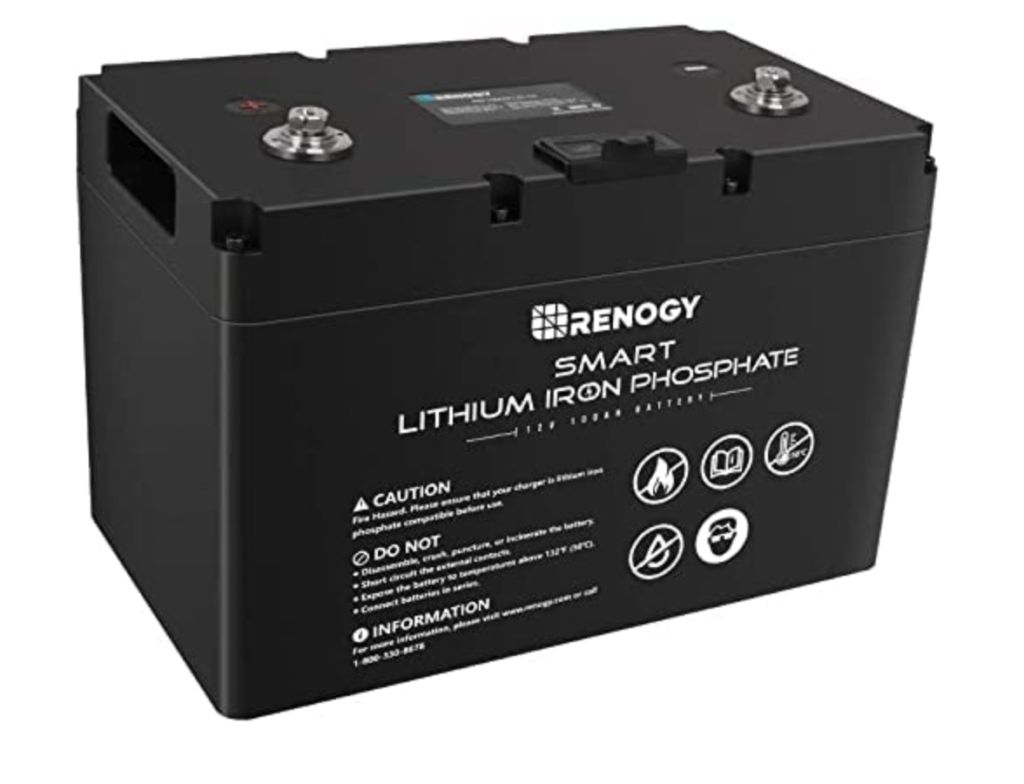
Lithium RV Batteries
Lithium-ion batteries are a newer, high-tech option for motorhome owners.
They are lightweight, compact, and can hold a charge for an extended period.
One of the significant advantages of lithium-ion batteries is their high energy density. This means that they can provide more power than other battery types while taking up less space in your motorhome.
Additionally, they have a much longer lifespan than other battery types and require minimal maintenance.
The main downside to RV lithium-ion batteries is their cost.
They are among the most expensive leisure battery options on the market.
Additionally, because they are still relatively new technology, some motorhome owners may be hesitant to invest in them until more long-term data becomes available.
Tip:
The best batteries in my opinion are Lithium RV batteries
Conclusion
There are various types of leisure batteries available for your motorhome. While each type has its pros and cons, knowing your needs, requirements and priorities will help you make the best decision for your situation.
If you prioritise affordability and accessibility over convenience and longevity, traditional lead-acid batteries may be the way to go.
If convenience is essential to you and you’re willing to invest in a higher-priced option with little upkeep requirements, AGM batteries might be a better fit.
If you’re looking for cutting-edge battery technology that provides exceptional power while taking up minimal space in your motorhome (and don’t mind paying extra upfront), lithium-ion batteries could be an excellent option for you!
Factors to Consider When Choosing a Motorhome Leisure Battery
When Choosing the right leisure battery for your motorhome is an important decision that requires careful consideration of several factors. In this section, we’ll discuss some of the key factors you should keep in mind when selecting a leisure battery.

Capacity
The capacity of a leisure battery refers to its ability to store energy and power your motorhome appliances.
It’s measured in amp-hours (Ah) and generally ranges from around 75Ah to 250Ah. The higher the capacity, the more power your battery can provide before needing to be recharged.
When choosing a battery capacity, it’s important to consider how much power you’ll need on a daily basis. If you plan on using energy-hungry appliances like air conditioning or large TVs, you’ll need a higher-capacity battery than someone who only plans on using lights and small electronics.

Voltage
The voltage of a leisure battery is another important factor to consider. Most motorhomes use either 12V or 24V systems, so you’ll need to choose a battery with the appropriate voltage.
It’s also worth noting that some appliances may require specific voltage levels, so be sure to check your devices’ specifications before making your purchase.

Weight
The weight of your leisure battery is also an important consideration, especially if you have limited storage space in your motorhome.
Larger batteries tend to be heavier, so it’s important to strike a balance between capacity and weight.
If weight is particularly important for your setup, consider purchasing multiple smaller batteries instead of one large one. This will allow you more flexibility in terms of placement and distribution throughout your motorhome.

Cost
Cost is always a factor when making any purchase, and leisure batteries are no exception. Prices can vary widely depending on the type, capacity, and brand of battery you choose.
However, it’s worth investing in a high-quality battery that will last longer and provide more reliable power than a cheaper option.
Consider the lifespan of the battery as well as the initial cost – while a more expensive battery may cost more upfront, it may save you money in the long run if you don’t need to replace it as often.
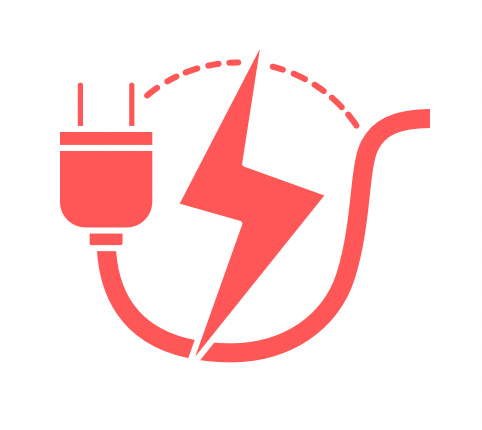
Installing Your Motorhome Leisure Battery
A Step-by-Step Guide to Installing Your New Leisure Battery
So, you’ve purchased your new motorhome leisure battery after careful research and bearing in mind your requirements ,and now it’s time to install it.
While the process can seem daunting at first, it’s actually quite easy if you follow these step-by-step instructions.
1. Begin by turning off all power sources in your motorhome, including the engine and any electrical appliances.
2. Locate your existing battery and remove the negative (black) cable first, followed by the positive (red) cable.
3. Remove any bolts or clamps holding the battery in place and carefully lift it out of its compartment.
4. Place your new leisure battery into the same compartment as the old one, making sure it is securely positioned.
5. Connect the positive (red) cable to the positive terminal on your new leisure battery and then connect the negative (black) cable to its corresponding terminal.

Tips for Ensuring Proper Installation and Maintenance
To ensure that your new motorhome leisure battery is installed correctly and performs optimally for years to come, follow these tips:
1.When positioning your new leisure battery in its compartment, make sure that it is secure and won’t move around during transit. This will prevent damage to both your motorhome and your battery.
2. Double-check that you have connected all cables correctly before turning on any power sources in your motorhome. – Regularly inspect your leisure battery for signs of wear or damage, such as cracks or leaks.
If you notice anything unusual, replace it immediately.
3. Charge your leisure battery fully before using it for extended periods of time.
This will ensure that you get maximum performance from it over a longer period.
By following these simple steps and tips, installing a new motorhome leisure battery can be an easy process that ensures smooth operation of all electrical appliances and systems within your vehicle.
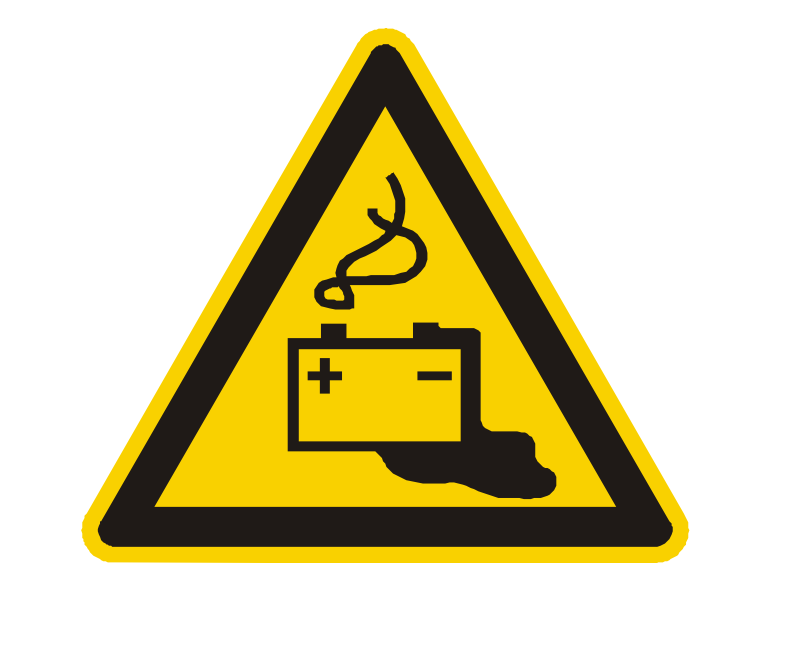
Maintaining Your Motorhome Leisure Battery
Now that you have a motorhome leisure battery installed, it’s important to maintain it properly to ensure its longevity.
Follow these tips to keep your leisure battery performing optimally:
Charge Your Leisure Battery Regularly
You must regularly charge your motorhome leisure battery, even when not in use.
This is particularly important during the off-season when your motorhome is not being used. It’s recommended that you check the state of charge of your battery every two weeks and recharge it if necessary.
To charge your battery, all you need is a standard 240V AC power source or a solar panel that can convert sunlight into electricity. There are also portable generators available in case of emergency.
Keep Your Motorhome Battery Clean and Dry
A dirty or wet battery can lead to corrosion and reduced performance. Make sure to clean your leisure battery regularly using a mixture of baking soda and water.
Avoid getting any liquid inside the vents or ports on top of the battery.
Also, make sure that the area around your motorhome battery is dry and free from any moisture – this helps prevent any rust build-up on the terminals and connections.
Common Issues with Motorhome/RV Leisure Batteries and Troubleshooting Tips.
Battery Overheating
In some cases, motorhome leisure batteries may overheat due to overcharging or excess load being placed on the system.
If this happens, it could cause permanent damage to your battery.
To prevent overheating, make sure that you don’t leave your motorhome connected to an electrical source for too long.
Additionally, avoid running too many electronic devices at once as they can put too much strain on your leisure battery.
Reduced Battery Life
If you notice that your motorhome leisure battery isn’t holding a charge as long as it used to, it may be time to replace it.
However, before you replace the battery, make sure that you’re properly maintaining it and using it within its capacity.
Also, consider investing in a larger capacity battery if you’re frequently running out of power.
This will ensure that you have enough power to run all of your devices without draining the battery too quickly.
Battery Fails to Hold Charge
If your motorhome leisure battery is failing to hold a charge or is losing charge too quickly, there may be an issue with the connections or wiring.
Check all connections and make sure they’re tight and free from corrosion. If everything looks good with the connections, consider testing the voltage of your battery using a multimeter.
If the voltage is lower than expected, it’s likely time for a replacement. With proper maintenance and troubleshooting techniques, you can keep your motorhome leisure battery operating at peak performance for years to come.
FAQs:
Q: Can I use a regular car battery instead of a leisure battery in my motorhome/RV ?
A: It is not recommended to use a regular car battery as a substitute for a leisure battery in a motorhome/RV. Leisure batteries are designed to provide a deep cycle of power over an extended period, while car batteries are designed for short bursts of high current to start the engine. Using a car battery as a leisure battery may lead to reduced performance and a shorter lifespan.
Q: How do I determine the right size or capacity of a leisure battery for my motorhome?
A: The size or capacity of a leisure battery is typically measured in ampere-hours (Ah). To determine the right size, calculate the total power consumption of your motorhome’s appliances and devices. Consider factors such as the number of devices, their power ratings, and the desired duration of battery usage. It’s advisable to choose a leisure battery with a capacity that comfortably exceeds your calculated power requirements.
Q: Can I use multiple leisure batteries in my motorhome/RV?
A: Yes, it is possible to use multiple leisure batteries in a motorhome/RV. Connecting batteries in parallel increases the overall battery capacity, allowing for longer periods of power usage. However, it’s important to ensure that the batteries are of the same type, age, and capacity, and that they are properly wired and balanced to ensure even charging and discharging.
Q: Can I charge my leisure battery while driving my motorhome/RV ?
A: Yes, you can charge your leisure battery while driving by utilising the motorhome’s engine alternator. The alternator generates electricity that charges both the starter battery and leisure battery when the engine is running. However, it’s important to ensure that your motorhome’s electrical system is set up correctly to charge the leisure battery and that the al
ternator is compatible with leisure battery charging.
Q: How long can a leisure battery last before it needs to be replaced?
A: The lifespan of a leisure battery can vary depending on factors such as battery quality, usage patterns, maintenance, and charging practices. On average, a well-maintained leisure battery can last between 3 to 7 years. However, it’s important to monitor the battery’s performance, regularly check its voltage, and replace it when it no longer holds a charge or exhibits signs of deterioration.
Conclusion
Summary of Key Points
In this Easy Beginners Guide to Choosing and Installing RV Batteries , we’ve covered everything you need to know about motorhome leisure batteries.
We’ve discussed the different types of batteries available, the factors to consider when choosing a battery for your RV, and how to install and maintain your battery properly.
Firstly, we looked at the types of RV leisure batteries available. There are three main types: lead-acid, AGM and lithium-ion.
Each type has its own pros and cons, but ultimately it comes down to what suits your needs best.
Next, we explored the factors that should be considered when choosing a RV leisure battery.
The capacity of the battery will determine how long you can use it before it needs recharging. Voltage is also important because it affects the appliances you can run off your battery.
Weight is another factor because heavier batteries can reduce fuel efficiency in your vehicle. We then moved on to installing your new leisure battery in your motorhome by providing step-by-step instructions on how to install it correctly.
We also offered tips for ensuring proper installation and maintenance to keep your battery running smoothly. We talked about maintaining your motorhome leisure battery.
To ensure longevity, proper maintenance is essential. We explained common issues that can arise with leisure batteries and how to troubleshoot them.
Encouragement To Invest In High-Quality RV Leisure Batteries
Now that you have all this valuable information about motorhome leisure batteries at hand, investing in a good quality one for your vehicle is essential!
As we have outlined in this guide there are plenty of options when it comes to choosing a suitable one from different types available such as lead-acid or lithium-ion cells so make sure you choose wisely based on what’s important for you (capacity/weight/voltage).
A high-quality RV leisure battery will not only enhance your motorhome experience but will also save you money in the long run by reducing the need for costly replacements and repairs.
Whether you’re planning a long road trip or just need something to power your appliances on a weekend getaway, investing in a high-quality RV leisure battery is definitely worth it!
So, I hope this guide has been helpul and informative, and that you’re now feeling confident about choosing, installing, and maintaining your new motorhome leisure battery. Happy travels! Its been great for me as having some issues with my batteries-charging at the moment and its been mostly user error on my part,and if your interested in ideas for earning money while on the road check out our blog on this.
Written by Rich
Other blogs discussing around the topic of Batteries , Solar and portable power banks are below
Best Rv Batteries for BoonDocking
Lithium RV Batteries:The Ultimate Guide
Portable Solar Panels for RV’s
